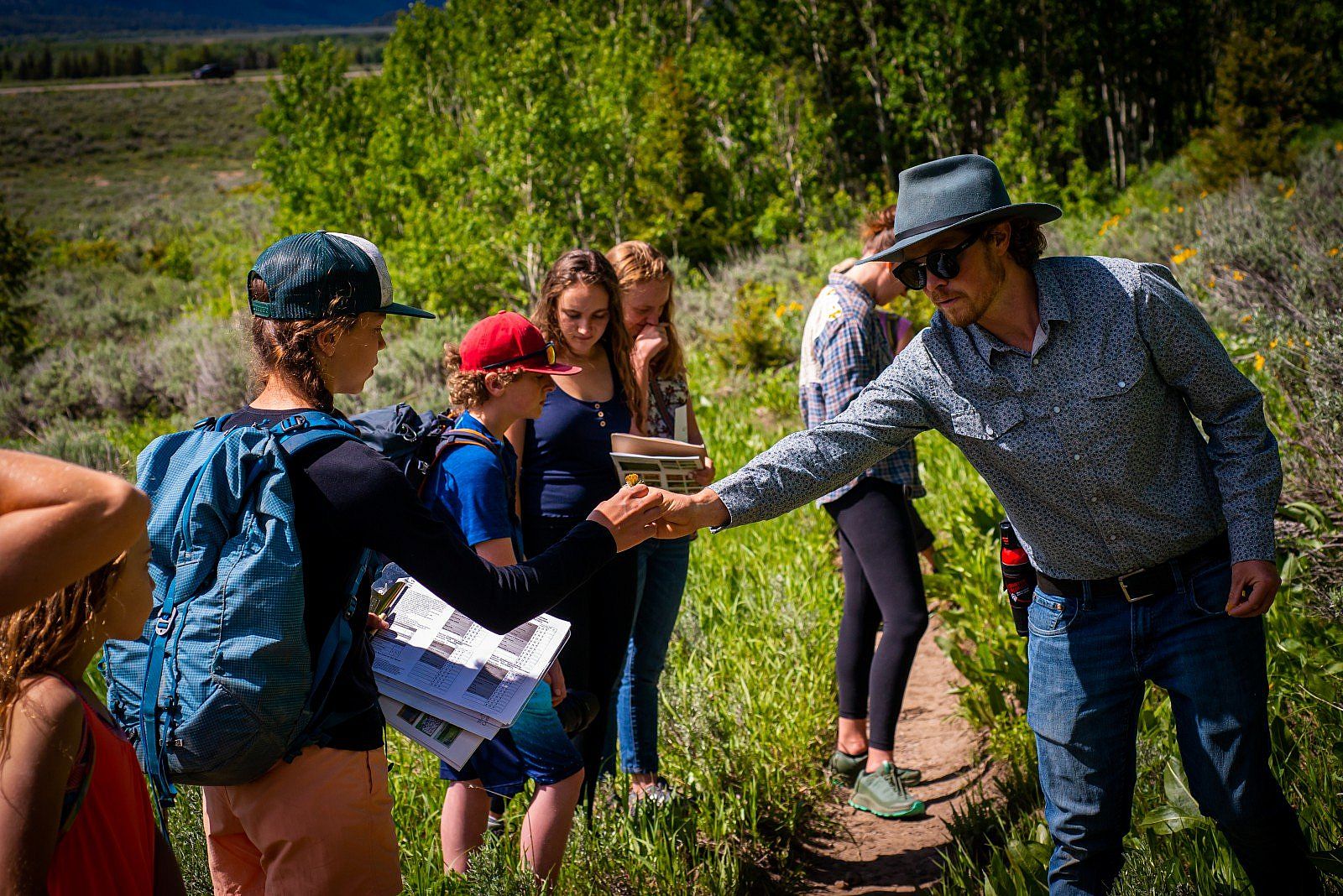
Wildflower Watch
Walking through sage brush steppe on the hottest day of the year, I felt like I was surrounded by a monotonous sea of dirt and dry bushes. Upon closer examination and with some help of expert botanists, the diversity of plants with their story of survival and change began to bloom. To understand their story, we need to recognize how the flora around us has been changing in recent history. To gain some insight into the matter, I accompanied Trevor Bloom from The Nature Conservancy and Nathan Doerr, curator of the Draper Natural History Museum, on their hike through the sage brush steppe near the Shoshone River. They showed me how the Buffalo Bill Center of the West is hoping to gather pieces of the story to better understand what is going on in the ecosystems around us. To do so, the Center is recruiting people like you and me to participate in a fun and fascinating citizen science program studying the wildflowers around us.
Phenology (Fun-ology)
Phenology (fun-ology), or the seasonal timing of events, is the technical term for the data the citizen scientists will be collecting. Collecting phenological data is nothing new in Wyoming. In the 1970s, renowned biologist Frank Craighead began taking notes recording when certain plants around his home in Moose, Wyoming, began to bloom. Building upon his legacy, Wildflower Watch was started near Jackson, Wyoming, almost 50 years later to compare modern phenological observations to his historic data. Since recording began again five years ago, thousands of observations have been made by more than 700 volunteers in the Jackson area. These critical observations have helped piece together the real-time story of climate change here in western Wyoming. The goal is to collect similar data here in the Bighorn Basin so we can see how climate change is impacting the sagebrush steppe.

“Wyoming alone has between 23 and 37 million acres of sagebrush steppe. It is believed, however, that more than half the sagebrush steppe across North America could be lost as the result of climate change,” said Doerr.
The data collected so far in Wyoming has shown that wildflowers and other plants are blooming weeks or even months earlier than they did just 50 years ago.

Becoming Better Stewards of the Land
One of the goals of the program is to be better stewards of the land around us and in order to do that, we must know what is here. Using a trail on a tract of land northwest of the Center, the plan is to utilize citizen scientists to observe wildflowers and other flora. Volunteers will hike an easy loop down to the Shoshone river. Multiple “zones” along the trail will have participants focus their observations on different species being sure to record the plant’s stage of life and growth—also called its phenophase.

While walking the trail with Nathan and Trevor, I was surprised at how many species there were. Even in the hot June sun, we observed salsify and prickly pears blooming along the trail. Moving closer to the river, it was fascinating seeing how the types of plants changed being only a few feet closer to a steady water source.
With a fire burning on the horizon, it was interesting to learn how invasive cheatgrass has elongated our fire season due to its early spring blooming and flammable state the rest of the year.

It took just a short hike to see just how much diversity of plant life thrives in the Big Horn Basin. Sure, the surface may appear to be never-ending waves of sage brush, but as you dive deeper and look at what lies beneath the surface, the unique complexities of the steppe begin to appear.
Looking to the Future
The benefits of the collected data will last beyond any of our times here in Cody.
“The documented observations of citizen scientists exploring both native and invasive plants in the sagebrush steppe will help us to understand how climate change is affecting the timing of phenophases in this fragile ecosystem,” said Doerr.
Every plant tells a story and the essential observations that will be made by citizen scientists will help us better understand this page in the world’s natural history.
The materials and setup for Cody’s version of Wildflower Watch are still in development, but we invite you to stay informed by following our social media page for updates, so you can participate in this amazing and crucial program when it rolls out. If you would like to get involved in other ways, check out our volunteer webpage here.
Written By
Brennen Serre
Brennen Serre is a PR and Marketing intern at the Center of the West. During the school year, Brennen studies Finance at Brigham Young University in Provo, Utah. Having worked and volunteered for zoos and museums around the world, he is passionate for helping non-profit institutions achieve their missions. He enjoys hiking, listening to vinyl records, and cheering on his favorite college basketball team.











